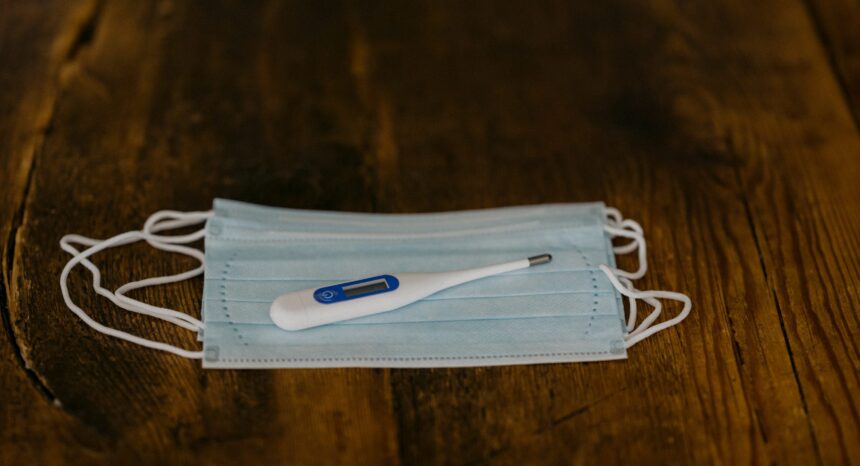As COVID-19 cases continue to emerge in rural areas of the U.S., rural health care systems will need to respond to the crisis with fewer resources than urban-based hospitals, and for a population that is generally older and sicker than urban populations. Journalists will need to tell their stories.
While working on our research roundup on rural health care and COVID-19, Journalist’s Resource spoke with Carrie Henning-Smith, an assistant professor in the Division of Health Policy and Management at the University of Minnesota School of Public Health, and deputy director of the University of Minnesota Rural Health Research Center.
Henning-Smith served as a panelist on a May 4 online SciLine media briefing titled COVID-19: Health Disparities and Vulnerable Populations. “Nearly 80% of rural areas are designated as medically underserved,” she said in the briefing. “Rural residents live farther, on average, from emergency rooms. And rural counties are also less likely to have ICU beds or ventilators available. When they do have them, they might just have one or two instead of enough to serve the population. Rural areas are also less likely to have access to reliable broadband internet and cellular connectivity. That’s really relevant in this current context. It makes it difficult to access health care and other services remotely.”
We asked Henning-Smith what she wants journalists to know when covering rural health and health care in the context of COVID-19. Below are four tips, based on our conversation.
1. Seek out COVID-19 rates at the county and town level, not just at the state level.
As states report lowering rates of COVID-19 infections and related deaths, keep in mind that this data might be masking active hot spots of steady or rising infection rates in rural communities. Henning-Smith urges reporters not to forget about rural areas as statewide infection rates drop. The Centers for Disease Control and Prevention’s CDC COVID Data Tracker lists cases, rates and death numbers at the county level. According to the CDC, as of June 11, the county with the highest COVID-19 case rate in the U.S. is Trousdale County, Tennessee. The rural county is home to the Trousdale Turner Correctional Center, the site of a COVID-19 outbreak.
“We’re seeing hot spots in rural places where there are prisons, where there are meatpacking plants, where there is deep, deep and chronic poverty and structural racism—especially in places like the Navajo Nation,” she says. She also points to long-term care facilities as hot spots in rural areas.
Journalists can help thwart the notion that prisons are an urban issue. “They are disproportionately in rural areas, and any way we can shine a light on that is really useful,” Henning-Smith says.
2. Don’t cover rural areas as homogeneous.
Racial and ethnic minorities make up 22% of the rural population, according to data from the U.S. Census Bureau. The healthcare and economic disparities experienced by black Americans in urban areas, which may be contributing to higher coronavirus infection and mortality rates, are also playing out in rural communities, she says.
Journalists also should pay attention to rural Latino communities, especially around agricultural sites, as well as Native American communities.
Henning-Smith adds that “in each of these situations, the one advantage that the rural communities have over urban is that you don’t have people living quite as close to one another.”
3. Keep in mind that the small size of rural health care systems can sometimes be an advantage.
While rural health care systems may often have fewer resources and less financial stability than urban systems, many rural systems are still independent, and their small size allows them to be more nimble. Decisions can be made more quickly, with fewer layers of decision makers.
“In the best case scenarios, and I’ve seen this around the country, rural decision-makers are just more in touch with what it is that the community needs, what the threats might be, and also what the best way to respond in a community-appropriate way might be,” Henning-Smith says.
In a smaller community where residents tend to know each other, it can be easier to test a larger percentage of residents for COVID-19 and do contact tracing. As an example, Henning-Smith refers to Vashon, a rural island community of 11,000 near Seattle. Their community-based approach to testing and tracing coronavirus infections was profiled in The New York Times article “Remote and Ready to Fight Coronavirus’s Next Wave.” Vashon Island residents hope their Rural Test & Trace Toolkit can be a model for other communities, and have published a downloadable guide to their strategy.
“There is so much hope in rural places,” Henning-Smith says. “There is so much flexibility, ingenuity, resourcefulness in many rural places.”
She encourages journalists to consider taking advantage of “any time that some light can be shone on that, and not just painting this as desolate and bleak.”
4. Look to a news outlet with the expertise on covering rural America.
Dr. Henning-Smith says her go-to source for rural health news is The Daily Yonder, a nonprofit news site published by the Center for Rural Strategies. She says they are a great source for “exactly what’s happening in rural [America] and why.”


Expert Commentary